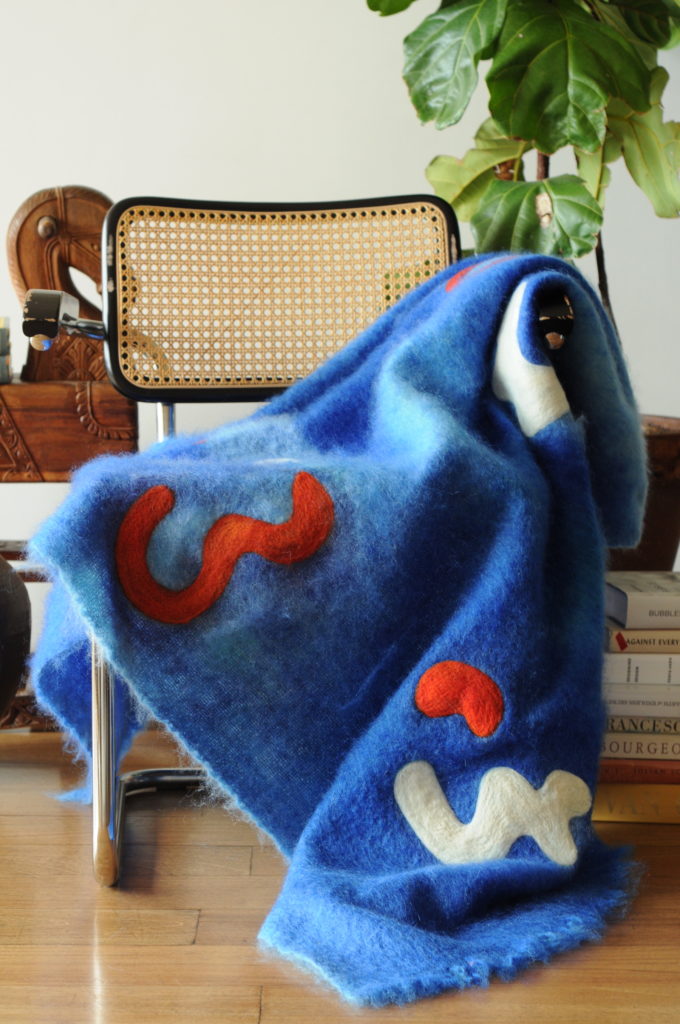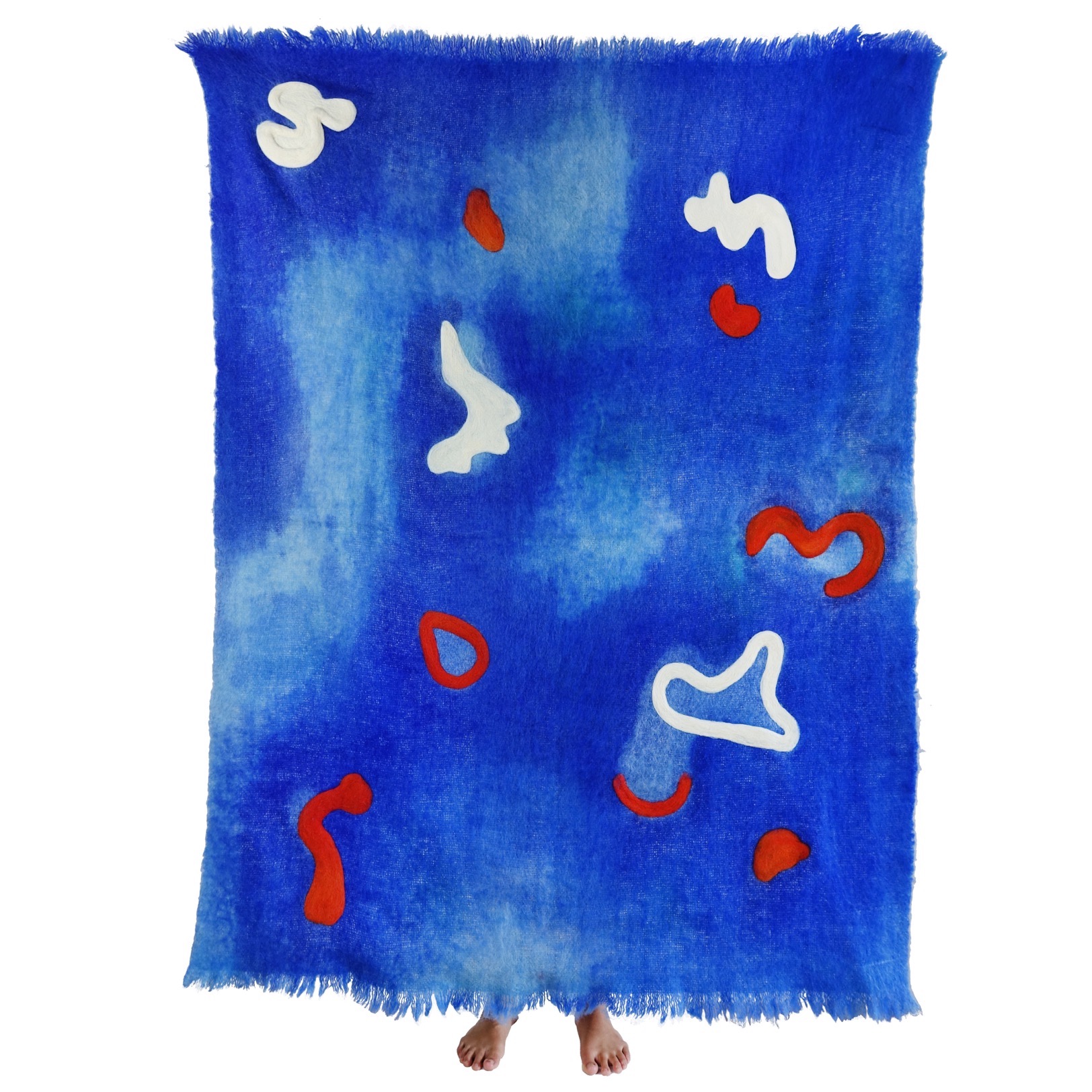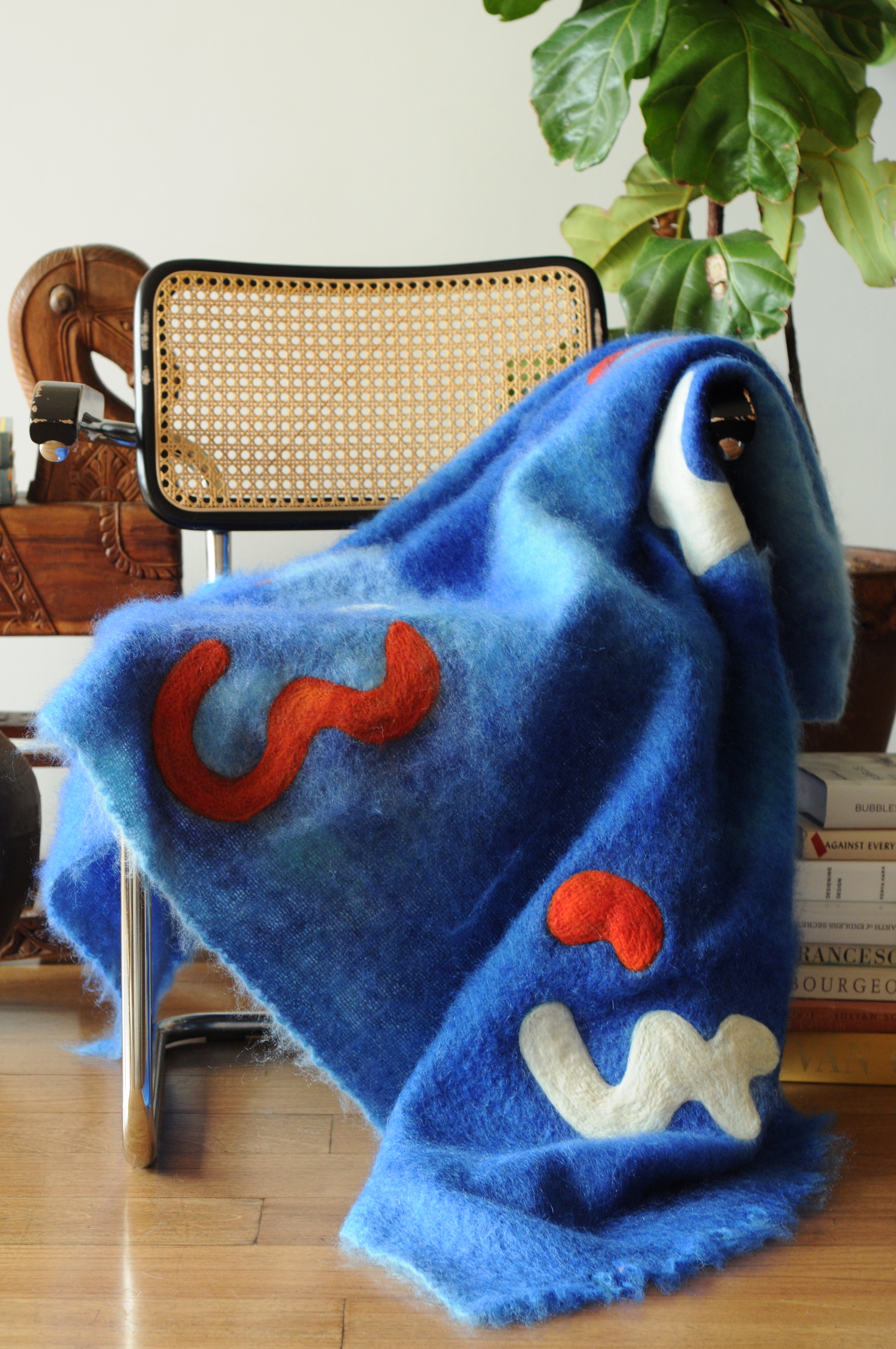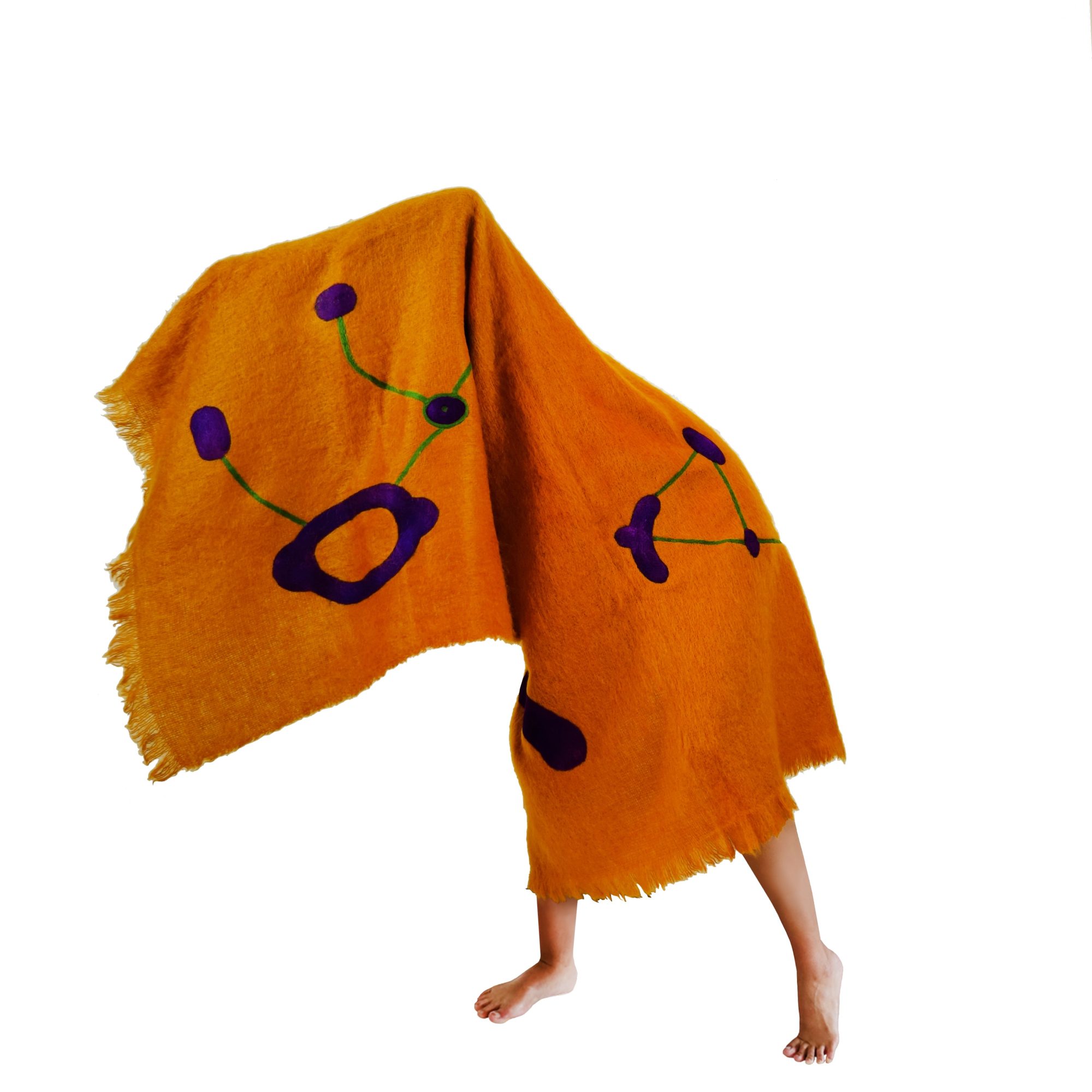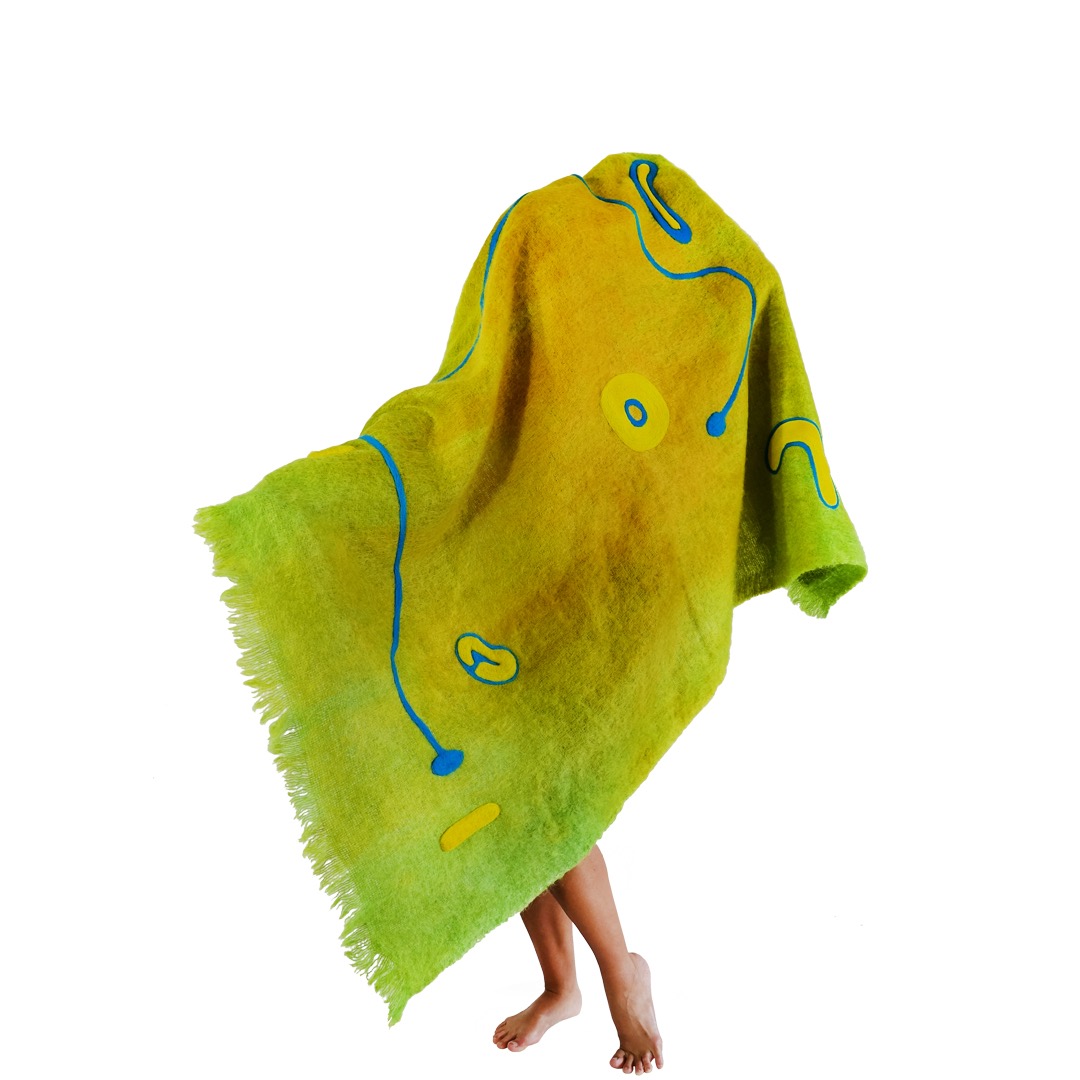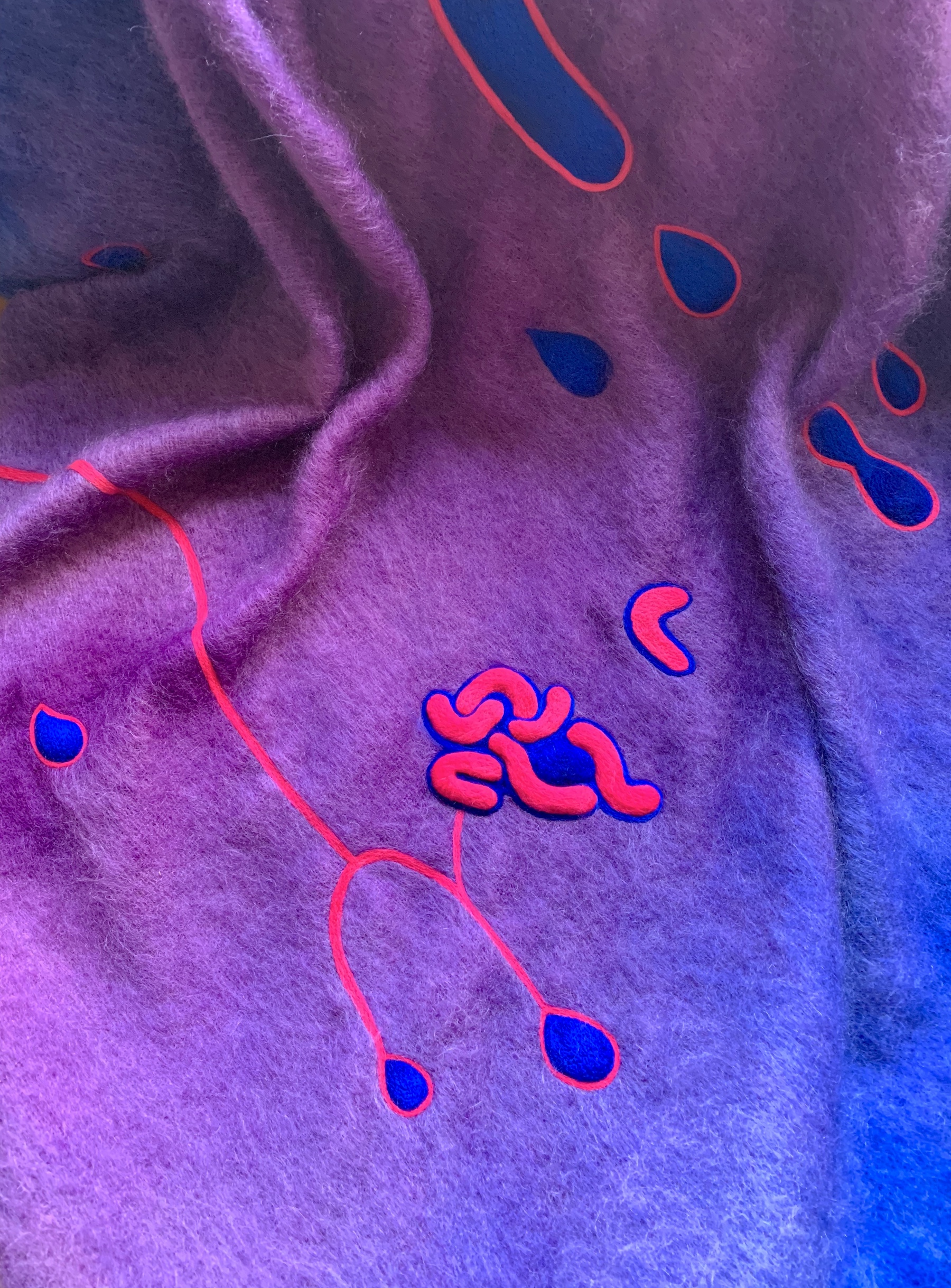Here, we ask designers to take a selfie and give us an inside look at their life.
Age: 26
Occupation: Designer.
Instagram: @studio_liamlee
Hometown: New York City.
Studio location: New York City.
Describe what you make: I make functional objects for the home. My current project is a series of one-of-a-kind hand-felted mohair and merino wool throws. The base of each throw is first woven in Ireland by a small wool mill from 70 percent mohair and 30 percent wool yarn. In my studio in New York, I then dye each piece and carefully felt by hand merino wool fibers into the textile. It’s a labor-intensive process that takes several days, but it enables me to form the felted wool fibers into a sculptural surface on the woven base. Each unique piece draws inspiration from sources ranging from microscopy and cartography to ukiyo-e prints and botany.
The most important thing you’ve designed to date: One of the more recent projects that I’m very proud to have worked on is Projects and Their Consequences, an architecture monograph I compiled while working at RUR Architecture. The book covers several decades of Jesse Reiser and Nanako Umemoto’s amazing work and was recently published by Princeton Architectural Press.
Describe the problem your work solves: All designers today have to grapple with issues surrounding sustainability, authorship, and systems of production and distribution. These concerns should be on the mind of anyone who is actively bringing more stuff into existence. If design is inherently bound to sociopolitical concerns through its ability to imagine and actualize possible futures, I prefer to contribute to a future in which our objects are composed of primarily natural materials and are built to last.
Describe the project you are working on now: In addition to my ongoing textile project, I’m working on a handful of furniture pieces in a reclaimed ash wood. The surface of each solid wood piece is carved into concentric bands that interact subtly with the striations in the wood grain.
A new or forthcoming project we should know about: For the month of August, some of my textiles and a few of my wooden furniture pieces will be on view on the Lower East Side gallery, Larrie, in a pop-up shop organized by Cafe Forgot. Cafe Forgot is a beautifully curated pop-up that features young, primarily New York–based designers. Although they mainly carry clothing, they’re beginning to include object and furniture designers in their roster.
What you absolutely must have in your studio: Books. I’m a bit of a book hoarder and it’s becoming a slight problem.
What you do when you’re not working: In my garden accidentally killing plants.
Sources of creative envy: I didn’t really receive a formal design education (I studied literature at the University of Chicago), so many people whose work inspires me aren’t strictly designers. Among them are Italo Calvino, Jorge Luis Borges, Faye Toogood, Seamus Heaney, Djuna Barnes, Angelo Mangiarotti, Studio Drift, Rei Kawakubo, Henrik Vibskov, Rick Owens—the list goes on.
The distraction you want to eliminate: Self-doubt.
Concrete or marble? Marble.
High-rise or townhouse? Townhouse.
Remember or forget? Remember.
Aliens or ghosts? Aliens—ghosts are too spooky!
Dark or light? Both. I don’t think you can appreciate one without the other.

